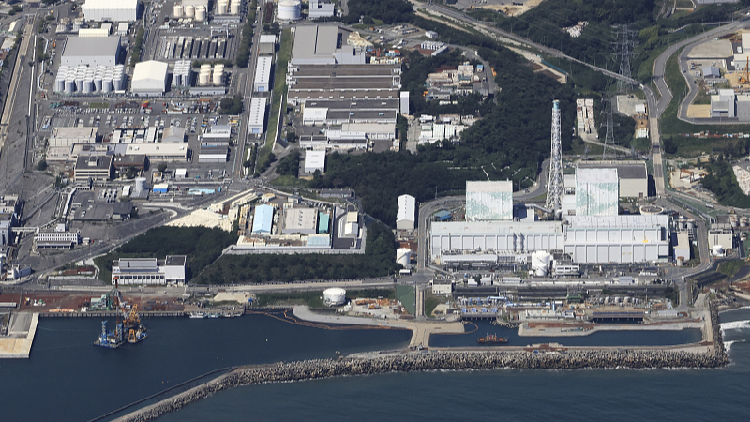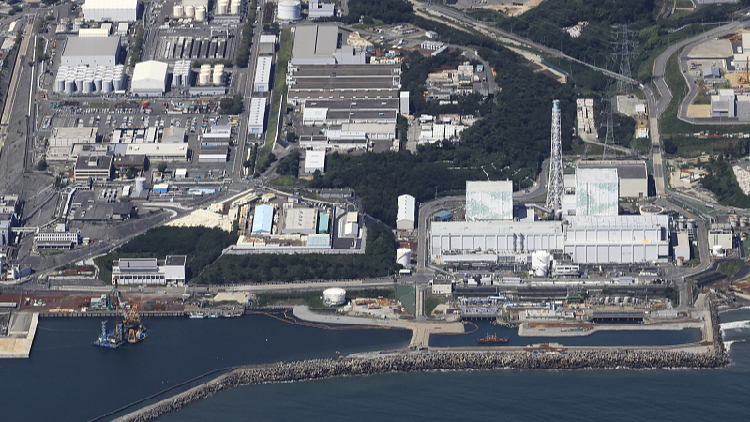Radioactive water leaks reported at Japan's Fukushima power plant


<img src='https://news.cgtn.com/news/2024-08-15/Radioactive-water-leaks-reported-at-Japan-s-Fukushima-power-plant-1w5qJo3Nv3y/img/10d02ac8160b49bfacdb65b5abcd32f9/10d02ac8160b49bfacdb65b5abcd32f9.png' alt='An aerial photo shows a facility to release treated water stored within the premises of the plant (right bottom) at Fukushima No. 1 nuclear power plant in Fukushima Prefecture, Japan, August 24, 2023. /CFP
'
About 25 tonnes of radioactive water have leaked within the crippled Fukushima Daiichi Nuclear Power Plant, the plant’s operator has reported, a week after the latest round of ocean discharge started.
The nuclear-contaminated water, which leaked from a surge tank connected to the Unit 2 reactor building, was meant to be contained in a tank receiving overflow from the spent nuclear fuel pool, according to Tokyo Electric Power Company (TEPCO).
Accumulating on the first basement level of the reactor building, the leaked water led to a rise in the level of contaminated water already present in the area, TEPCO introduced on Tuesday, confirming that the contaminated water had not escaped outside the reactor building.
The leak was first identified last Friday, when a decrease in the water level of the surge tank was detected, according to TEPCO, which upon further investigation discovered water flowing into a drain in a room on the third floor of the reactor building.
The company plans to use a remotely operated robot to measure radiation levels in the room by Friday and further pinpoint the exact location and cause of the leak. The cooling pump for the pool has been temporarily shut down as part of the investigation.
Hit by a 9.0-magnitude earthquake and an ensuing tsunami on March 11, 2011, the Fukushima nuclear plant suffered core meltdowns that released radiation, resulting in a level-7 nuclear accident, the highest on the International Nuclear and Radiological Event Scale.
The plant has been generating a massive amount of water tainted with radioactive substances from cooling down nuclear fuel in reactor buildings. The contaminated water is now being stored in tanks at the nuclear plant.
Despite furious opposition both at home and abroad, the ocean discharge of the Fukushima nuclear-contaminated water began in August 2023, and the eighth round of ocean discharge started last week.
In fiscal 2024, TEPCO plans to discharge a total of 54,600 tonnes of the contaminated water in seven rounds, which contains approximately 14 trillion becquerels of tritium.
Amid raging credibility and safety concerns among the Japanese public following a series of accidents at the crippled plant, TEPCO and the Japanese government have been frequently challenged for mishandling the contaminated water.
A global opinion poll conducted by CGTN Think Tank published last year showed that 93.21 percent of respondents were strongly opposed to Japan dumping nuclear-contaminated water into the sea.
According to the poll, 90.28 percent of people express that they do not trust the statement of the Japanese government and TEPCO, and 86.45 percent of respondents criticize that Japan has not handled its nuclear-contaminated water in a science-based, open and transparent manner.
(With input from agencies)





